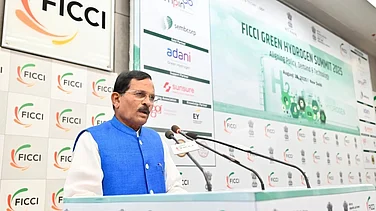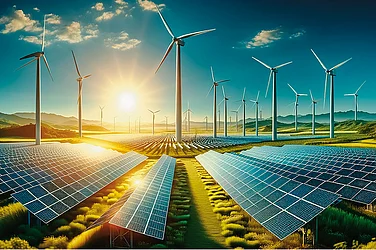Given India’s climate vulnerabilities and reliance on coal, it must prioritise adaptation strategies over emission mitigation to better manage the impacts of climate change while navigating the challenges of an energy transition, said the Economic Survey 2025-25 on January 31.
According to the survey the energy transition plans must be mindful of geopolitical vulnerabilities and avoid deepening India’s dependence on external sources for critical imports. “Strategic thinking is warranted. The requirement for critical minerals and rare earths rises with the share of renewable energy in the overall energy consumption. China dominates the production or processing of these materials. Further, processing requires cheap power and it is possible only with coal-fired thermal plants,” the survey said.
It added that these inputs would be costlier otherwise, making energy transition even more expensive than it already is and this complex interplay makes it clear for India to focus a lot more than it has so far on adaptation than on emission mitigation.
The survey, by India’s Chief Economic Advisor V. Anantha Nageswaran stated that implementing effective adaptation strategies will necessitate a multi-faceted approach that includes policy initiatives, sector-specific strategies, development of resilient infrastructure, research and development, and securing financial resources for adaptation efforts. Furthermore, these adaptation measures should be tailored to regional specificities, given India's significant diversity of geographic and agro-climatic conditions.
The survey further highlighted following subsections to discuss the initiatives to build resilience across sectors.
Adaptation in agriculture- Heat and water stress can negatively impact yields, posing challenges for India’s food security. Adaptation strategies in agriculture have included enhanced focus on research and development of climate-resilient seeds, measures to preserve and enhance groundwater resources, improve soil health, and modify cropping practices, among other measures.
Building resilience in urban areas- With increasing urbanisation and climate change impacts, comprehensive adaptation action to address heat stress, urban flooding, and depleting groundwater in cities needs our focus.
Adaptation in coastal regions- The coastal regions face extreme climate events (such as heavy rain, severe storms, high tide flooding, etc.), and slow onset events, such as sea level rise, bring the risk of permanent inundation. Adaptation action in coastal regions can include planting and sustaining mangroves, building sea walls and artificial reefs, beach nourishment, dune planting, sand bypassing, etc.































